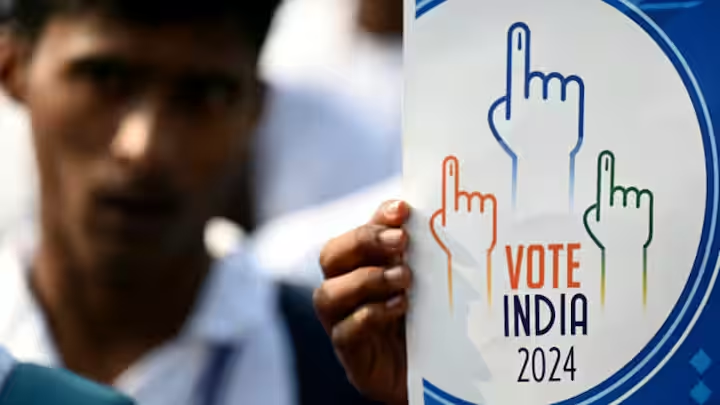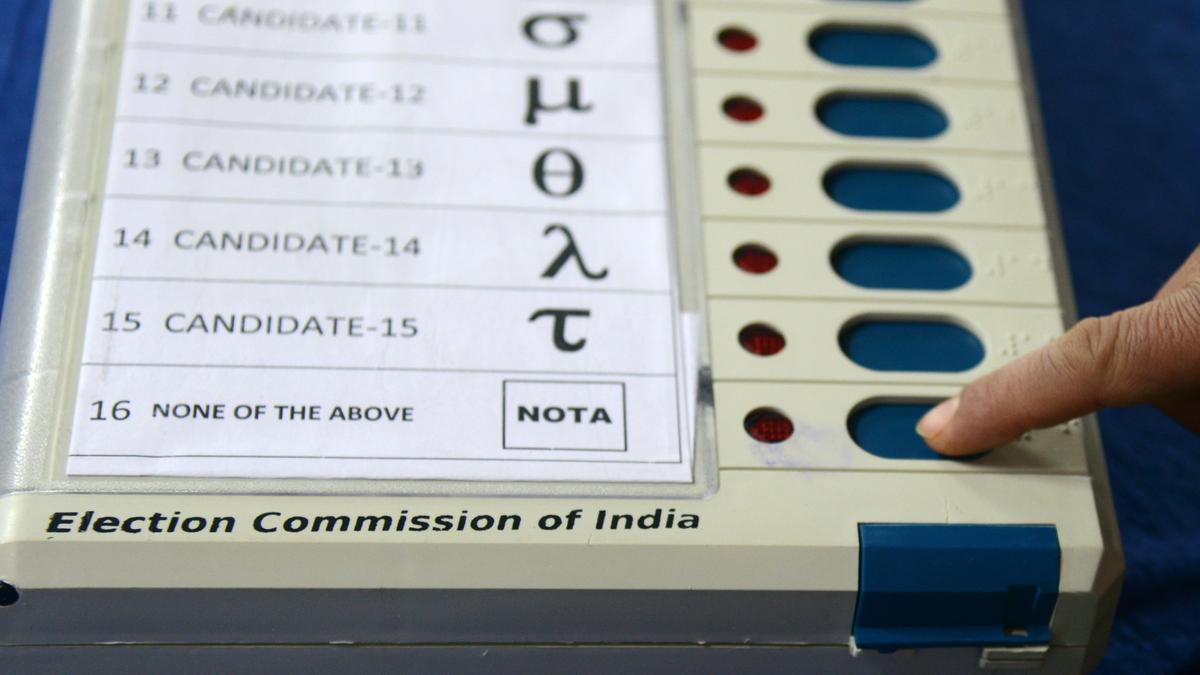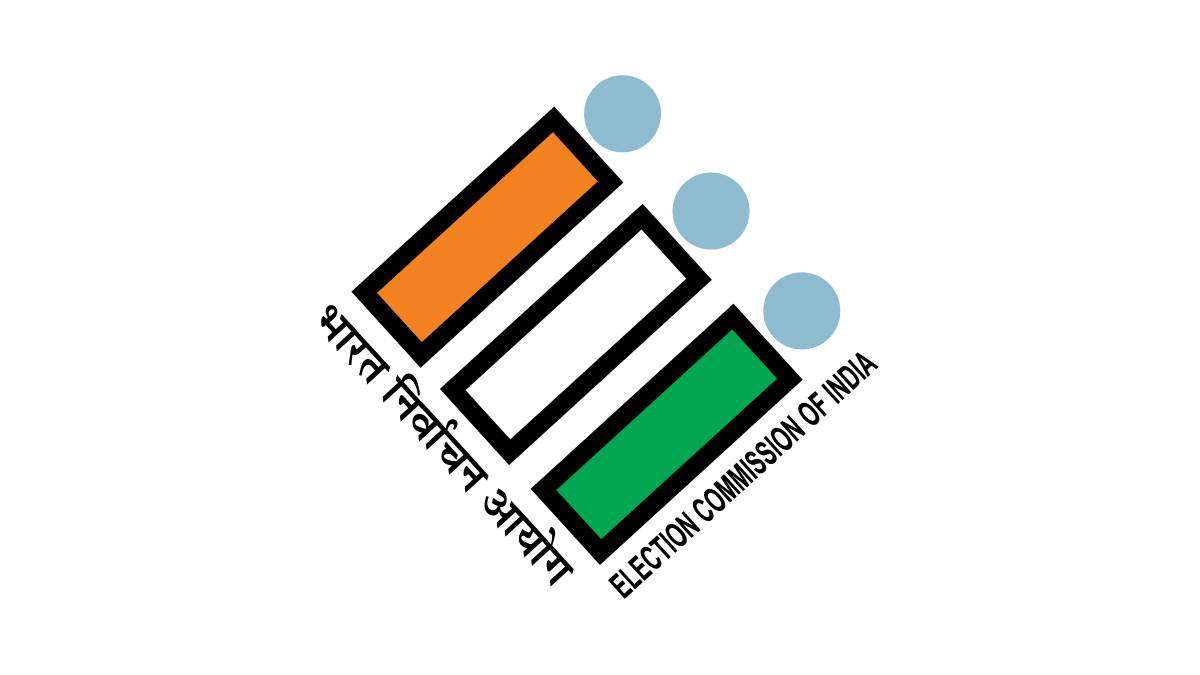NOTA, No Votes and Unopposed Nominations: The Grey Areas of the Indian Election Process Explained
In the world's largest democracy, the importance of elections cannot be overstated. But to make a significant decision while choosing a leader, do the voters have enough information to make a conscious and sound resolution? On top of that there are many vague rules and loopholes in the provisions of election laws.

The reality of NOTA and the polarization of votes, everything a Voter should know before the elections
The most chaotic of all seasons in India is the election season. In a country of 141.7 crores people, every five years, citizens get a chance to select the best representative of the state. For this one day people across the country, in the hot sweltering Sun, reach their registered polling booth and press a button that will decide the future of the whole nation, exercising their Right to Vote (Article 326).
But each citizen, while being responsible for such a momentous decision, has always been kept ignorant of the election rules and guidelines.
Why is voting necessary? What if no one votes? How can I not choose anyone?Is the Election Commission neutral? These are all the questions and certain grey areas of Indian elections that always go unquestioned. On top of that, the new NOTA button has added more to the confusion of the voters.
There are many discrepancies and loopholes in the election guidelines, all of them explained below:
NOTA or No Vote:

Most elections in India have been a process of choosing the lesser of the two evils. But what if one wants to choose absolutely no evil? That is why the Supreme Court of India asked the election commission to include the “None Of The Above” option.
Starting in 2013, it was first implemented in legislative assembly elections across states. Since then, out of all the parties, NOTA has been a favorite button to press for many voters. And an increase in votes for NOTA reflects the distrust and dissent of many citizens.
To get ready early in the morning, taking a day off from work, waiting in the voting line and all of this in the Indian summers only to choose no one and opt for NOTA. This shows how frustrated are the Indian citizens that they are ready to take all pains only to not choose any representative.
Though rebellious in nature, in reality, pressing the NOTA is a rebellion without a cause. A report by the Association of Democratic Reforms (ADR) even went on to call this option as a “toothless tiger”.
The reason for calling NOTA futile and useless is that its presence or absence makes no difference in the outcome of the results. If candidate A were to get 10 votes, B had 30 and NOTA got 100. Candidate B will be declared the winner.
This example has been recreated in real electoral results during the 2024 State elections where nearly 47 seats had NOTA votes exceeding the winning margin. The candidate with the next highest vote was officially declared as the winner.
While implementing NOTA, CJI P. Sathasivam said, “Negative voting will lead to a systemic change in polls and political parties will be forced to project clean candidates.” He further debated that if the right to vote is a constitutional right, then the right to reject is also a form of expression. But a report by the ADR has revealed that after the introduction of NOTA there has been no significant change in the number of candidates with criminal records.
Unfortunately many Indian citizens and potential voters are kept in the dark regarding this aspect of NOTA. And that is how many parties that use polarization of votes use this button to divide the vote share, and win the elections.
So pressing for NOTA isn’t better than not voting at all, since both of them derive the same results. This button only helps the government to show a fluctuated percentage of total voters turnout.
“One” vote counts:

Most functioning democracies around the world believe in the adage of “one person, on vote”. But in India the vote of a literal “one” person in a whole constituency also counts.
This has not been stated in any law, but at the same there are also no provisions that say that there should be a minimum percentage of voters turnout. For example, since 1989, many elections held in the region of Jammu and Kashmir, a lot of constituencies had less than 10% voter turnout, some even had as low as 3% turnout. And yet winning candidates were declared who went on to occupy the seats.
So, hypothetically speaking if Lalu Prasad Yadav were to contest from his constituency of Raghopur, then even if no one came to vote except his 9 children he would still win.
This loophole is not addressed in any provisions concerning elections. Also, this hypothetical situation might also come true, since many people from certain constituencies have started to boycott the elections as an act of dissent against the politicians for not fulfilling their demands. In cases like this even if one person were to cast a vote, the winner will be announced accordingly.
Uncontested Winner:
In the largest democracy of the world, in certain instances, candidates have won unopposed without even a single vote being cast. Such an incident occurred as recently as during the first phase of Lok Sabha elections in Gujarat.
Mukesh Dalal, won a Lok Sabha seat from Surat unopposed as one of the opposition leaders was disqualified and the other seven dropped out one by one.
Though this may seem like the start of impending dictatorship in the nation, what is surprising is that this outcome is supported by the Election Commission of India’s handbook, which says, “if in any constituency there is only one contesting candidate, declare that candidate to have been duly elected immediately after the last hour for withdrawal of candidature. In that event, a poll is not necessary.”
It isn’t also the first time that a candidate has won in such a way. This was the 24th occurrence after almost 3 decades, the last uncontested election being recorded in 1989.
The most troubling aspect of this rule is that a powerful party with ample resources could either buy out the other opposition candidates, or might even use violent tactics to blackmail them to withdraw from the elections. Even in the incident in Gujrat, one cannot be sure that the reason why the 8 opposition leaders could not participate in the process wasn’t because of such foul-play.
It is also problematic that in case of no opposition, a candidate could be announced as the winner without the consensus of the general public in a democracy by the people, for the people and of the people.
Crime no bar:
A person with criminal cases isn’t eligible for government jobs in India unless acquitted, but could form a government without even any acquittal. Because in Indian politics there is sex, age, caste and crime no bar.
As many as a thousand candidates are contesting the Lok Sabha elections 2024. Out of them 252 of them have registered criminal cases against them, while out of this 161 have serious criminal charges against them.
Serious criminal charges involve offences such as murder, rape, assault, corruption charges, and non-bailable offences. So, out of the candidates with criminal charges, nearly 74% of them are accused of the above mentioned crimes.
The MyNeta website by ADR organization shows information on all the candidates from different constituencies such as their qualifications, criminal charges, total assets and liabilities. But the seriousness of the criminal charges isn’t open to the general public.
Duality of ECI:

The Election Commission of India is supposed to be an independent body that is authorized to conduct free and fair elections in India. The keyword here is “supposed” to be. Because the recent actions of the ECI do not reflect its apparent independence.
This issue arose when in a panel for three members, one was selected from the opposition and two close allies of the ruling government were chosen. Indian Administrative Officers (IAS), Gyanesh Kumar and Sukhbir Singh Sandhu were chosen by the ruling government as election commissioners for the three member panel of EIC. The former had worked with the Home Minister for the abrogation of Article 370, while the latter supervised the drafting of Uttarakhand’s Uniform Civil Code.
In a 2:1 situation, Congress leader Adhir Ranjan Chowdhury has been overpowered. And the recent leniency of the EIC in taking actions against the certain parties’ campaigns of polarizing votes has made their independence questionable.
This Lok Sabha election, campaigns have recorded extreme violations of the Model Code of Conduct set by the EIC, but there have been no cognizance of the matter by the constitutional body. Instead, they have gone as far as to say “We Decline Comment” on usage of hate speech in a rally.
These are the several aspects of the elections process that are not elucidated enough by the authorities for the general public to understand. And for a voter to make a conscious decision while choosing a leader, knowing and understanding every detail about the electoral process is immensely important.




